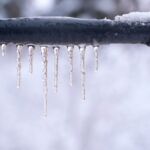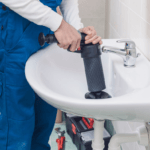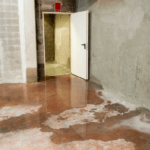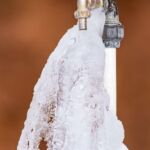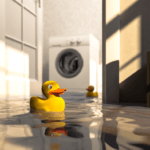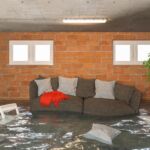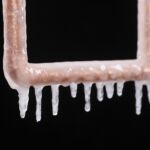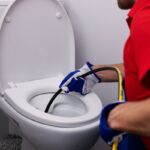
Jun 17, 2023 | Leaking Pipe, Plumbing services
In the past, plumbing leaks were easy to identify because they emitted a loud, high-pitched sound. But today’s modern homes and buildings often feature silent leaks that go unnoticed until you see signs of water damage. That’s why it’s important to know how and where common plumbing leaks happen. Here are some of the most common types of leaks, with some tips on how you can find and fix them:
Leaks in Toilets
To check for leaks in the toilet, flush it. If water appears to be pooling around its base, there may be a leak in one of two places: under the toilet tank /or around its base.
To check for these types of leaks, lift your toilet seat (or lid) and look underneath. If you see water pooling in this area, there has most likely been a crack or breakage somewhere in your plumbing system that allows water to escape.
You should also check around where your actual plumbing meets with the toilet’s base by reaching behind where it sits on top of floorboards; often times small cracks can form here, too, due to age-related wear & tear over time. This could lead to large amounts of water being wasted each day without anyone noticing until they go away on vacation.
Leaks in Pipes
- Leaks in pipes can waste a lot of water, and a leaky pipe can lead to a burst pipe. If this occurs, you’ll need to replace the entire line and possibly even find another location to place your toilet.
- Leaks can also lead to mould and mildew growth if left untreated for too long, which can lead to bad smells and potential respiratory complications for you and your family.
If you notice any leaks in your plumbing system at all, it’s important that you address them immediately so that they don’t cause major plumbing concerns later on down the road!
Dripping Pipes
Dripping pipes are a sign of a leak. A leaky faucet is the most common cause of dripping pipes. If you have a dripping faucet, this can be fixed by replacing the washer and/or valve in your sink or tub. You may also need to replace worn-out plumbing fixtures, such as shower heads and toilets.
Conclusion
Leaks can be a serious problem for your home. Not only do they damage your property, but they also waste water and money, while leading to health complications if the problem festers.
Don’t let a plumbing emergency disrupt your life any longer than it has to: if you’re searching for an emergency plumber now, we provide same-day emergency service for individuals and families across South Eastern Ontario who require immediate assistance.
When disaster strikes, you need a solution NOW. That’s why we’re available on-demand, day or night, with 5-star, premium plumbing solutions.
Book your plumbing service with our online tool or call 343-305-1172 today!
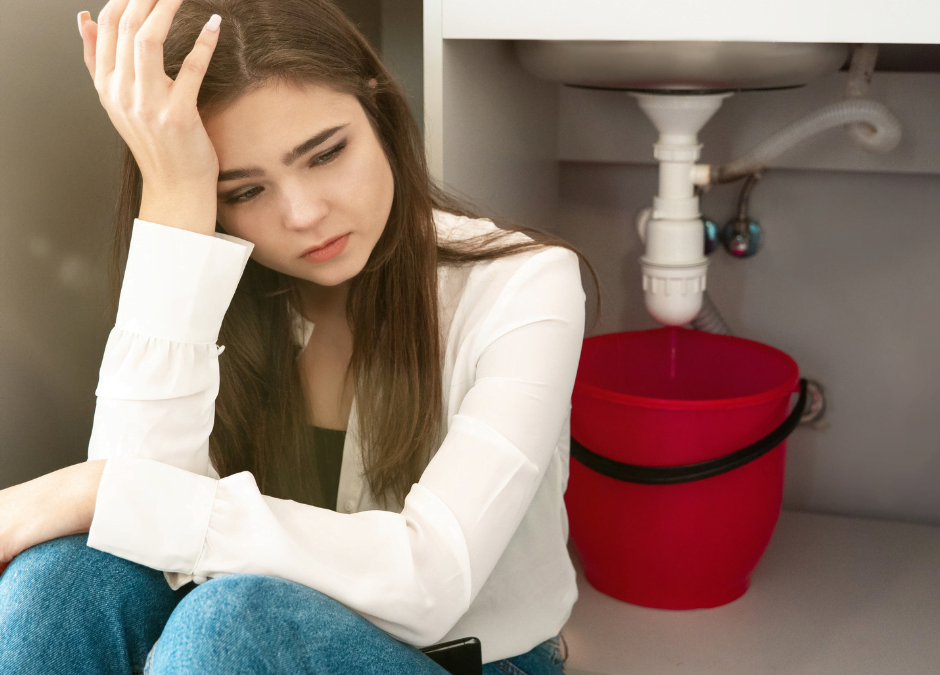
May 10, 2023 | Leaking Pipe, Plumbing services
Leaky pipes are one of the most common and pesky plumbing issues homeowners face. That constant drip-drip-drip can drive you crazy, not to mention cause extensive water damage if left unchecked. Don’t panic—with this comprehensive guide, fixing a leaky pipe is easier than you think. We’ll walk you through locating, diagnosing, and repairing leaks in all types of pipes. With a few simple tools and techniques, you can stop the annoying flow and restore your plumbing to full functionality.
Shut Off the Water Supply
The first step in any leaky pipe repair is to turn off the water supply to isolate the leak. This prevents additional water from flowing through the pipe while you are diagnosing and fixing the problem.
Locate your home’s main water shut-off valve, usually near your water meter or main incoming water line. The valve will look like a spigot or knob that you can turn clockwise to shut off water to the entire house. Once the water is off, turn on the lowest faucet in your home to drain the pipes.
If you can’t find the main shut-off, start by shutting off water valves under sinks or behind toilets to isolate certain sections of your plumbing. Turning off the water stops additional leakage as you track down the source of the leak. Having the water off also creates a dry workspace for repairs.
Find the Source of the Leak
Now it’s time to play detective. With the water off, inspect all pipes, joints, valves and fittings throughout your home to locate the leak. Look for water stains, moisture drips or puddles which indicate a leak. The source may be obvious, like water dripping from a fitting. Or, it may be more subtle, like moisture seeping through drywall or damp areas under sinks.
Check in these key areas:
Pipe Joints and Connections
Tighten fittings that connect pipe segments in case they have loosened over time. Joints between copper pipes often leak first.
Supply Lines
Inspect the flexible water supply lines that run to sinks, toilets, ice makers, washing machines, etc. The pressure clamps at the end of these hoses frequently leak.
Pipe Valves
Corrosion or looseness around shut-off valves and spigots leads to drips and moisture buildup.
Rusty or Damaged Pipes
Age, minerals in water, and freezing can corrode and eventually puncture metal pipes. Any visibly rusted or damaged sections likely leak.
Behind Walls or Under Sinks
Use a moisture meter to detect leaks inside walls or cabinets. Look for water stains or warped surfaces which indicate a hidden leak.
Isolate the exact section of the pipe causing the leak so you can focus your repair efforts. Turn off shut-off valves around the leaking area to stop the water flow. Call a professional plumber for assistance if you can’t locate the leak source. Leak detection services use specialized tools like infrared cameras, acoustic listening devices, and pipe video inspection to precisely pinpoint hard-to-find leaks.
Assess Pipe Damage
With the water off and the leak source identified, closely inspect the pipe’s condition. Look for any visible cracks, holes, corrosion, dents or damage, allowing moisture to escape. The pipe material (copper, PEX, galvanized steel, lead, etc.) and the nature of the damage determine which repair technique you will use.
Here are some common leak causes to look for:
Punctures: Objects or freezing can pierce pipes, creating holes that leak. This often happens when pipes run through walls and floors.
Cracks: Pressure, corrosion and physical stress can cause small cracks or splits in pipes that weep water. Cracks frequently form near joints.
Worn Seals: Gaskets and washers inside pipe joints degrade over time, causing drips and seepage.
Mineral Deposits: Hard water forms on the inside of pipes, eventually clogging and breaking them. White or rust-coloured stains indicate mineral buildup.
Freezing: Ice blocks expand and contract pipes until they burst at weak points. Freezing often splits joints and fittings.
Loose Fittings: Vibration can loosen the screw-on fittings connecting pipe segments, allowing leaks.
Carefully drying the pipe gives you the best view of damage like cracks, pinholes and corrosion. Use this visual evidence to decide if you can patch the leak or need to replace part of the pipe.
Choose a Repair Method
The type of pipe material and extent of damage dictate your repair options. Here are some standard DIY methods for patching leaky pipes:
- Cracked or punctured plastic PEX, PVC and ABS pipes: Cut out the damaged section and join the cut ends with a coupling fitting. Flexible PEX pipes make this repair easy.
- Pinhole drips in copper pipes: Scrub the pipe, then apply an epoxy patch kit according to package directions for a quick fix. This doesn’t strengthen the weakened pipe, so leaks may recur.
- Leak at threaded fitting: Tighten the fitting several rotations with pipe wrenches. Apply pipe thread sealant for a snug, water-tight seal.
- Corroded section of galvanized or cast iron pipe: Replace the corroded length. Cut, remove and reconnect with a coupling fitting.
- Split pipe joint: Tightening the compression nut at the joint may stop minor leaks. Replace the worn gasket for a better seal.
- Frozen and split pipes: Wrap the split with tape for temporary leak control. Replace the damaged section completely when water is restored.
If you aren’t comfortable making pipe repairs yourself or the leak requires the replacement of concealed pipes, hire a professional plumber. They have specialized tools and expertise to complete all pipe repairs.
Test Repairs and Restore Water
With the repair complete, it’s time to test your workmanship! Turn the main water supply back on and open all faucets to flush any sediment and air from the lines for a few minutes.
Inspect your repair closely as the system pressurizes. Any drips, moisture or visible leaks mean you must rework the repair before returning the system to full service. Small leaks often grow over time, so it’s essential to fix them entirely now.
Once the repair passes the leak test, open shut-off valves to restore water to all areas of your home. Continue monitoring the repaired pipe section over the next several days while using fixtures fed by the line. If a leak reappears, repeat the repair process until the pipe holds water reliably.
Prevent Future Leaks
Even a perfectly executed repair is only temporary if the underlying cause of leakage isn’t addressed. Use these tips to improve pipe longevity and prevent future leaks:
- Insulate water pipes in unheated areas like basements, garages and crawl spaces. This prevents freezing and pipe bursts in winter.
- Install heat tracing wire next to pipes that tend to freeze. The wires warm pipes just enough to avoid ice blockages.
- Remove mineral deposits inside pipes to maximize flow. Descaling protects pipes from internal corrosion and damage.
- Anchor and support pipes properly to reduce strain on joints. Stresses lead to cracking and loosening over time.
- Replace old steel, lead and galvanized supply pipes with longer-lasting copper or plastic piping.
Annual plumbing inspections help spot potential leak points before they turn into gushers. A plumber can assess pipe condition, identify necessary repairs and make improvements to optimize your plumbing health.
Know When to Call a Licensed Plumber
While many leaky pipe fixes are DIY-friendly, don’t hesitate to contact a professional plumber when:
- You can’t locate the source of persistent leakage. A leak detection specialist has the tools to pinpoint the problem spot.
- The damaged pipe is concealed behind walls, under slabs or in crawl spaces. Accessing buried pipe requires cutting holes you may not be able to repair.
- The leak requires the replacement of large sections of pipe or re-plumbing of fixtures. This work often requires permits.
- You lack the skills, tools or confidence to make plumbing repairs yourself. There’s no shame in hiring a pro!
In a plumbing emergency like a big burst pipe or rapidly expanding leak, immediate professional help is a must. The 24/7 specialists at Tap Tech Plumbing can promptly respond to emergencies to control your leak.
The Bottom Line
While any leak can initially seem like a plumbing disaster, arming yourself with the right knowledge is helpful. Carefully diagnose the leak source, thoughtfully assess pipe damage, and execute targeted repairs using the techniques outlined here. Know your limits, though—some leaks require a plumber’s expertise. Persistent leakage or gushers are your cue to call in the pros.
Rest easy knowing that 5-star service is only a phone call minutes away! We come to you with 25+ years of plumbing experience.
Book Here or call us 24/7 at 343-305-1172.
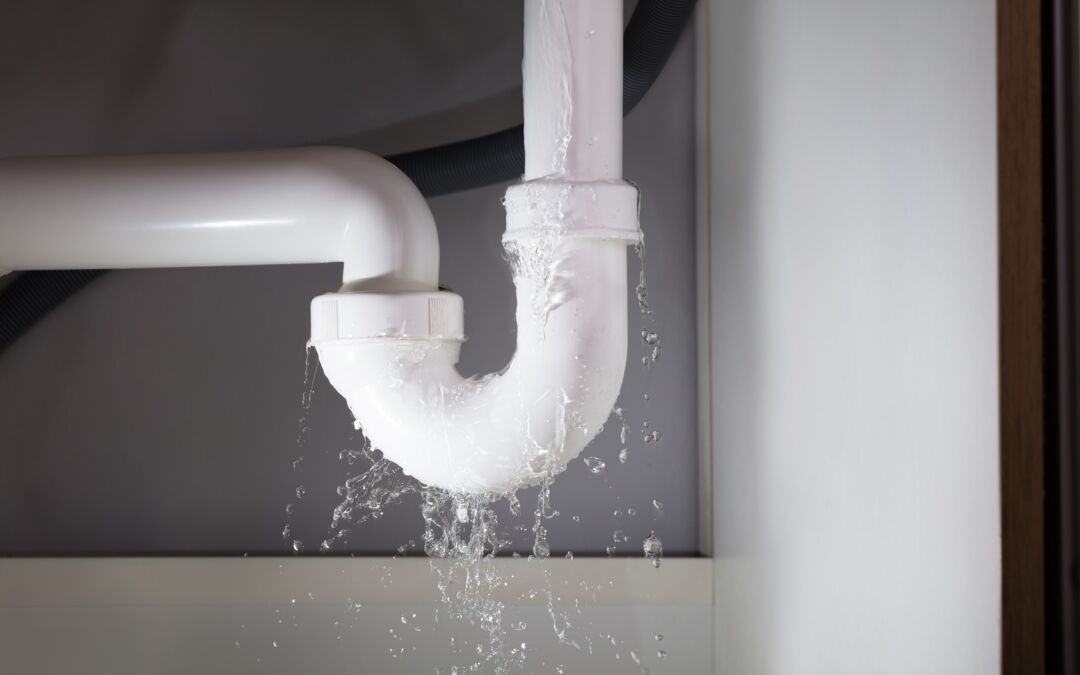
Apr 15, 2023 | Leaking Pipe, Plumbing services
Water leaks are common, but that doesn’t mean they should be ignored. In fact, if you spot a water leak in your home or place of work, you need to contact a plumber right away to prevent further damage. Leaky pipes can be very dangerous, and you may face unpleasant and scary consequences if you ignore this problem.
Many homeowners will ignore small water leaks and will assume it’s not a serious problem, but this is far from the truth, and this problem cannot be overlooked. Leaking pipes need to be fixed the moment they are noticed, and this is true regardless of the size of the hole. Every leak can be potentially dangerous, and even a few drops can be problematic.
It Can Negatively Affect Your Health
Leaking pipes can lead to a number of health issues and are especially dangerous for anyone struggling with asthma or any kind of allergy. A water leak can trigger attacks because it is a sign that there is stagnant water present, and this can be very dangerous for respiration.
A water leak can also cause surface mould to grow in affected areas, and this can cause a variety of infections like eye irritation, rashes, fever, coughs and respiratory disease. Water leaks will lead to moisture, and this will become the perfect breeding place for moulds, mildews and disease-carrying pests. This can sometimes cause malaria, which is very dangerous to your health. For this reason, you need to contact a professional to fix your water leak the moment you spot one in your home.
Your health must be prioritized, and leaky pipes must be repaired fast.
It Can Increase Your Water Bills
Believe it or not, even the smallest water drip can increase your monthly water bill because a continuous leaking pipe will waste a significant amount of water, even if it is one drop at a time. The amount of water you waste every day will raise the cost of your water bills, and you will have to spend more instead of saving.
Calling a plumber will prevent you from having to spend unnecessarily, and you will have more money in your pocket every month!
It Can Lead to Serious Damage
A leak of any kind can cause major damage to your home if it is ignored. Mould can deteriorate the structure of your home, and you will have to pay for new walls or renovations if the leak is not addressed. If you deal with leaky pipes in a timely manner, you will spend a lot less than if you have to repair your home, which can cost thousands of dollars.
Conclusion
Are you looking for a plumber who can fix leaky pipes? Tap tech is one phone call away! Our plumbers will fix the issue before it becomes more serious, and you can rely on our team if you are dealing with a leaking pipe. Contact us today to learn more about our plumbing solutions!

Feb 8, 2023 | kingston plumbing, Leaking Pipe, Plumbing services
It is important to know the difference between a leak caused by a broken or damaged pipe and one caused by a fixture like a faucet or a toilet. You may be able to fix the problem yourself, but if the problem is too serious, hiring a professional plumber can save you money on repairs and prevent further damage to your home.
When water leaks into your home unexpectedly, it’s easy to panic. But if you take a few minutes to think about how best to respond before calling someone for help (or rushing out for supplies), you will be much more prepared for what comes next. In this article, we’ll discuss common causes of leaks in homes and how you can identify them correctly so that you can get started on finding solutions right away:
When you see water coming into your home, take a minute to ensure you have responded correctly to the leak.
If there is a leak in the ceiling, turn off the water supply to that area immediately and call a plumber. If you are not sure how to turn off the water supply, contact a plumber or follow these instructions:
- Turn off all of your home’s faucets (including showers and toilets) at their base valves-these are usually located beneath sinks or near tubs.
- Shut off any main shutoff valves outside your house if there are visible leaks on exterior pipes (for example, lawn sprinkler system). Turning off power sources like electrical, or sump pumps may also be necessary.
Find the Source of the Leak
First, you’ll want to find the cause of the leak, which is likely a water pipe or fixture. A homeowner can fix leaks in pipes, but leaks in fixtures (such as faucets) mean it’s time to call a professional plumber. Additionally, if your sewage line or plumbing system is damaged structurally, a professional plumber near you in Kingston will help rectify the issue and ensure your water is operating properly.
Plumber in Kingston & the Surrounding Area
If you’re in the unfortunate position of having a leaky pipe or fixture, it’s important to know that there are some long-term issues that can arise if you look to quickly fix this problem yourself. You can trust the 25+ years of experience with a trusted Plumber in Kingston at Tap Tech.
Call today at 343-305-1172 for your drain cleaning, leaking pipes and fixtures, and plumbing concerns.
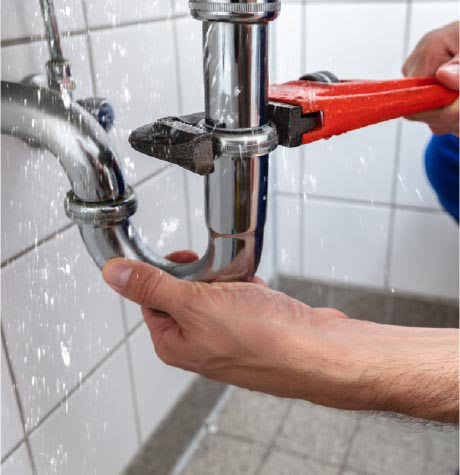
Aug 17, 2022 | Leaking Pipe, Plumbing services
Leaky pipes are more than just a nuisance. As a plumber in Kingston, we have seen leaky pipes lead to serious damage and costly repairs if left unaddressed for too long. It’s important to be on the lookout for signs of a potential leak. Here are some warning signs that you should watch out for in your home:
Plumber in Kingston: Leaky Pipes
Leaky pipes are more than just a nuisance. If left unfixed for long enough, they can cause major problems that require extensive repairs and even endanger your family’s health.
Leaks are often caused by cracks in the pipe itself or by corrosion at the joints where two pipe pieces connect. These leaks allow water to seep through the walls of your home and into surrounding structures like walls or ceilings. If left unattended for too long, this water can cause mould to grow and mildew on your floorboards and drywall—and that’s not all!
Leaky pipes can also damage floors, weaken foundation supports, create electrical issues due to water damage near wiring sources (more on that later), and even put you at risk for injury. Get in touch with your local plumber in Kingston if you’re noticing any potential signs of a leaky pipe.
Signs of a leaky pipe
If you notice any of these signs, it’s time to call a professional.
- Mould and mildew: If you spot mould and mildew in your bathroom or kitchen area, this is usually an indication of a serious water problem in your home. Mouldy areas should be cleaned immediately with bleach or ammonia so that the scent will help prevent the growth of new mould spores.
- Water damage: You may notice small discolorations on floors, walls and ceiling; these discolorations indicate where water has seeped into your home through cracks or pinholes in water or drain pipes.
- Musty smell: If you discover a musty smell in your home, this is a sign of mould. Mould can cause respiratory problems, allergic reactions, infections and asthma. It can also irritate the skin and eyes.
Plumber in Kingston
Are you searching for a plumber in Kingston, Ontario to help with leaky pipes, a leaking pipe or anything else plumbing-related? Get in touch with the team at Tap Tech today: 343-305-1172.
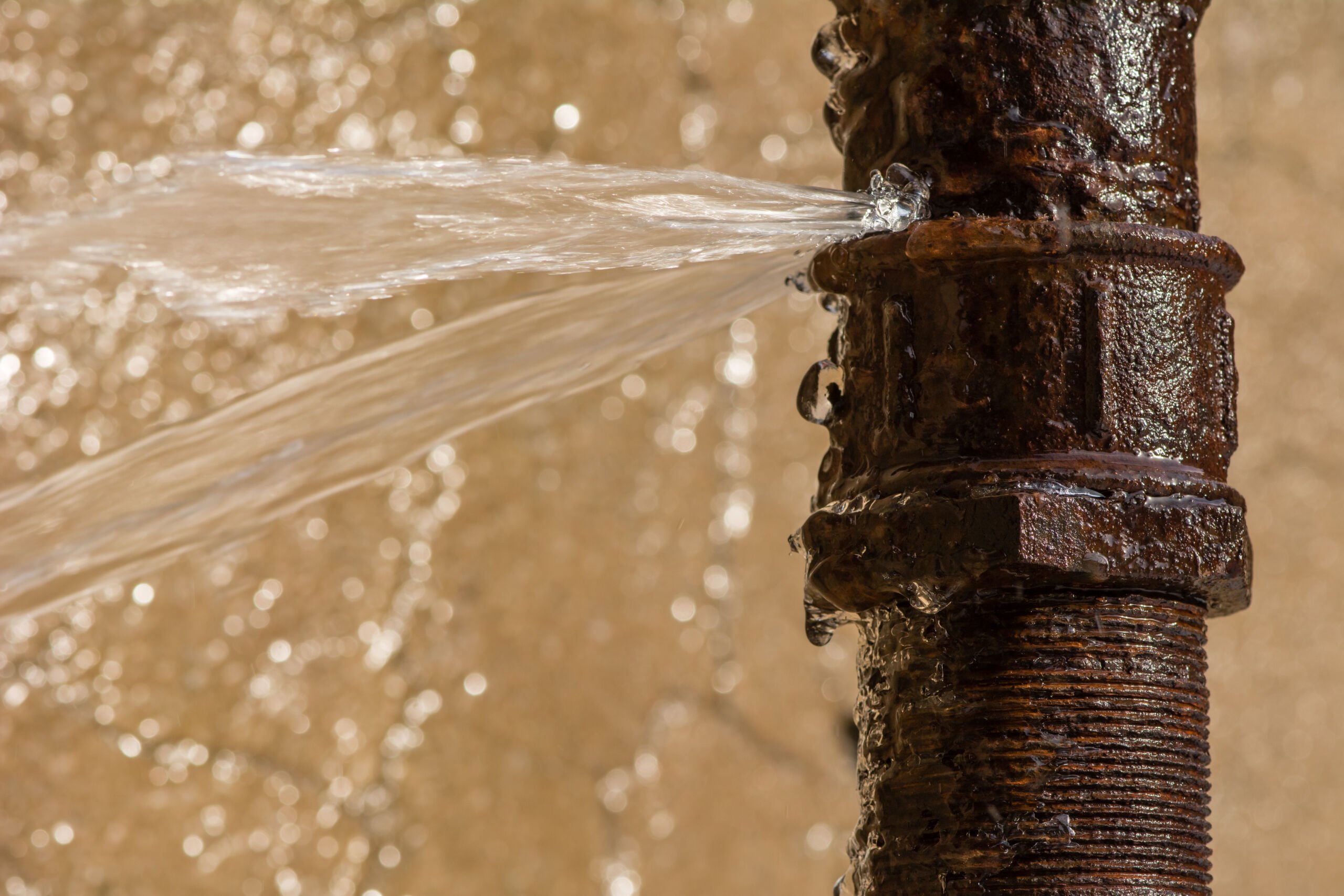
May 25, 2022 | kingston plumbing, Leaking Pipe, Plumbing services
A leaking pipe is a serious problem because it will cause damage to your home, and you will also waste a lot of money. To prevent this from happening, you need to know the warning signs, and the following guide will help you detect a leaky pipe in your home:
1. Unusually high water bills
If your water bills start skyrocketing unexpectedly, it may be a sign of a leaking pipe so keep an eye on this aspect because it can start small, and your bill may increase a little bit each month. Or, you may receive a larger than expected bill one month, and regardless of the situation, you need to get your pipe fixed; otherwise, you will end up draining your bank account, and your home will become damaged.
2. Musty smells
In some cases, you will be able to smell the problem before you see it and mould and mildew can be inside your walls, vents or even under your floor. Musty-smelling rooms are a sign of a problem, and the cause is likely a leaky pipe because when water sits in one place, it will stagnate and produce a terrible odour.
3. Mould and mildew
If you start to see mould and mildew outside your tub area, you may have a leaky pipe, so you need to look into this problem. Moulding walls and baseboards are not normal, nor are moulding ceilings or floors in your bathroom or kitchen, which is a sure sign of a leaking pipe.
4. Stained walls, ceilings and floors
Stains on these surfaces will indicate that something is going on behind the surface, and this is true even if the stains are small or barely noticeable. Any spots or the outline of a watermark must be addressed, regardless of how subtle they may be, because if your leaking pipe is not fixed, you can suffer significant damage. A sagging ceiling, bendable walls and sinking floorboards are just a few examples of problems you may experience, all of which you need to avoid.
5. Wet spots
This can result from a leaking pipe in your home or outside, so you need to investigate the problem. If you notice puddles around the outer walls when there has been no rain or see wet spots inside your house, you have a problem, and your leaking pipe will have to be fixed. Where there is water, mildew and mould will follow, and structural damage can also occur, so you need to address this problem right away.
Contacting a reputable plumber is a must when dealing with a leaking pipe, and the experts at TAP Tech can help! Whether you need an emergency plumber, drain, or sewer cleaning, we do it all, and you can place your trust in our team. Our plumbing techs are knowledgeable, experienced and reliable so if you are in Kingston, Ontario, contact us today!







